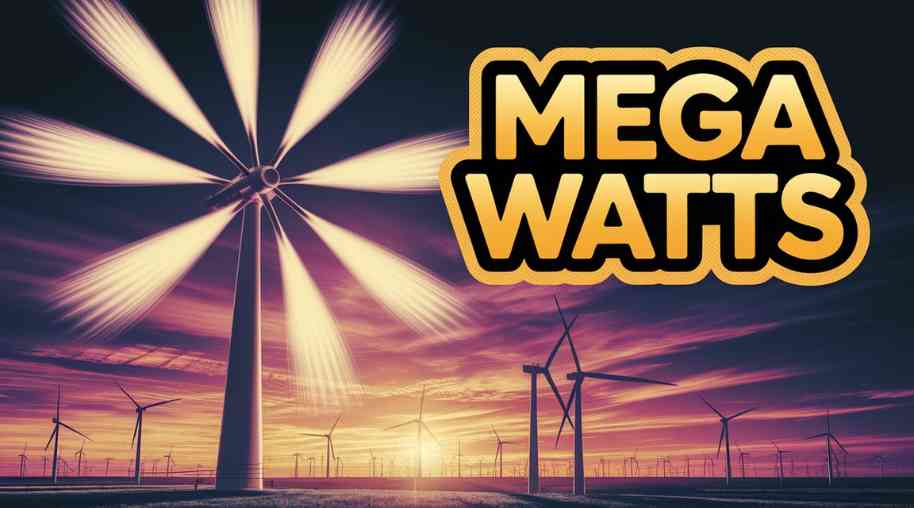MW Full Form-Mega Watts
by Shashi Gaherwar
0 2240
Mega Watt (MW): Understanding Its Role in Power Generation and Energy Consumption
Electricity is a fundamental part of modern life, and its generation and consumption are measured in various units. One of the most important units in power generation and distribution is the Mega Watt (MW). It is widely used to describe the capacity of power plants, electricity consumption, and energy requirements in industries and households.

This article explores what Mega Watts are, how they are used, and their role in power generation, renewable energy, and global electricity consumption.
What is a Mega Watt (MW)?
A Mega Watt (MW) is a unit of power equal to one million watts (1,000,000 W) or 1,000 kilowatts (kW). It represents the rate at which energy is produced or consumed.
Basic Power Unit Conversions:
- 1 MW = 1,000 kW (kilowatts)
- 1 MW = 1,000,000 W (watts)
- 1 MW = 0.001 GW (gigawatts)
Examples of Mega Watt Usage:
- A small town may require 5–10 MW of power.
- A medium-sized wind turbine generates around 2–3 MW.
- A large coal or nuclear power plant can produce 1,000+ MW.
How is Mega Watt Used in Power Generation?
MW is commonly used to describe the capacity of power plants and the demand for electricity in homes, businesses, and industries.
- Power Plant Capacity:
- Power plants are rated based on their MW capacity, indicating how much electricity they can generate under optimal conditions.
- Examples:
- A solar farm may have a capacity of 500 MW.
- A nuclear power plant can generate 1,500 MW or more.
- A hydroelectric dam may produce over 10,000 MW (10 GW).
- Electricity Consumption:
- MW is used to measure total electricity consumption in different sectors.
- Examples:
- A household may consume 5-10 kW per day, translating to 0.005–0.01 MW.
- A large factory could use 10–50 MW depending on operations.
- A city’s peak demand may exceed 500 MW to several GW.
Mega Watt in Renewable Energy
With the growing adoption of renewable energy, MW is crucial in assessing the potential of different energy sources.
- Solar Power:
- A single solar panel generates around 300-400 watts.
- A solar farm with 1 million panels can generate 300 MW.
- Wind Power:
- A single wind turbine can produce between 2-5 MW.
- A large wind farm can generate several hundred MWs.
- Hydropower:
- Small hydroelectric plants generate 5-50 MW.
- Large dams like the Three Gorges Dam in China produce over 22,500 MW (22.5 GW).
Factors Affecting MW Output
Several factors influence how much MW a power plant or renewable energy source can generate:
- Fuel Type:
- Coal, nuclear, and natural gas plants produce higher MW outputs compared to solar and wind farms of the same size.
- Efficiency:
- A power plant’s efficiency determines how much of its fuel is converted into usable electricity.
- Weather Conditions:
- Solar and wind energy production depend on sunlight and wind speed, causing fluctuations in MW output.
- Infrastructure and Grid Capacity:
- The ability to transmit MW efficiently depends on the electric grid and infrastructure.
The Role of Mega Watt in the Global Energy Sector
As global energy demand increases, MW plays a crucial role in ensuring sufficient power generation and distribution. Key trends include:
- Growth in Renewable Energy: Governments worldwide are investing in solar and wind projects to meet MW demand sustainably.
- Electrification of Transportation: The rise of electric vehicles (EVs) is increasing MW demand from charging stations and battery storage.
- Smart Grids and Energy Storage: Advanced grid systems help distribute MW efficiently, reducing energy waste.
The Mega Watt (MW) is a vital unit in power generation, electricity consumption, and energy planning. Whether in conventional power plants or renewable energy systems, MW helps measure and manage the electricity supply to meet growing global demands. With the shift towards sustainable energy, MW will continue to be a key indicator of progress in the energy sector.
Further Learning Resources
If you’re passionate about building a successful blogging website, check out this helpful guide at Coding Tag – How to Start a Successful Blog. It offers practical steps and expert tips to kickstart your blogging journey!
For dedicated UPSC exam preparation, we highly recommend visiting www.iasmania.com. It offers well-structured resources, current affairs, and subject-wise notes tailored specifically for aspirants. Start your journey today!

Share:








Comments
Waiting for your comments